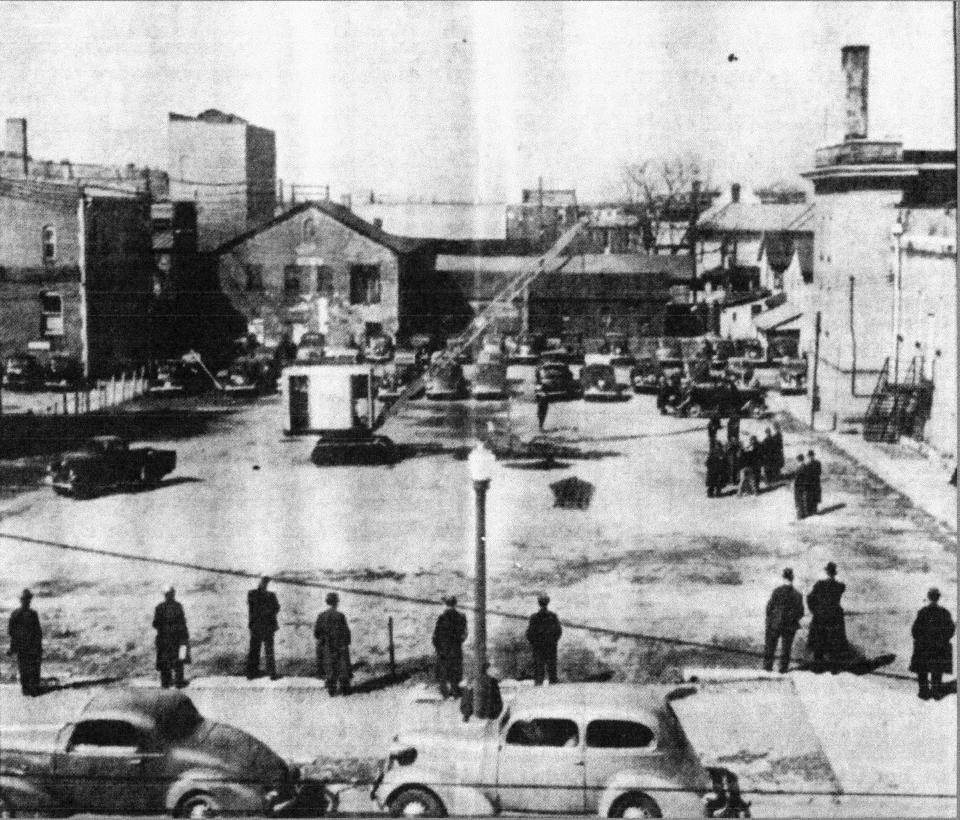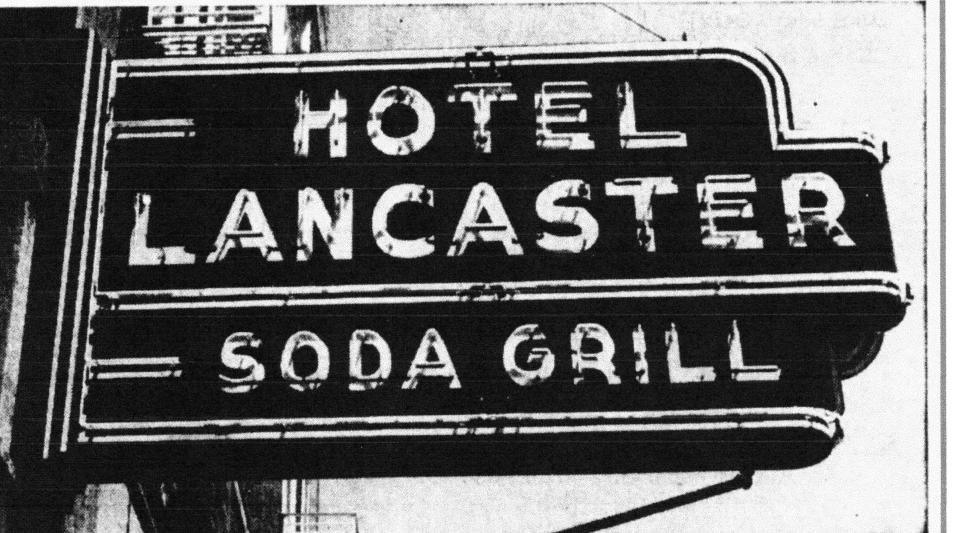Remember When: Literally getting the Hotel Lancaster off the ground
Readers have traveled from 1823 to 1937 in the last two articles but we find ourselves still “standing on dirt” at what will become 123 N. Broad St. This property had been purchased Sept. 8, 1928, by I. J. Collins. Oct. 30, 1937 newspapers (including the New York Times) announced the merger of Hocking Glass Co. with other glass companies. Together, they would be known as the Anchor Hocking Corporation (1 Nov. 1937 E-G). The consolidation brought together properties valued on the books at $22,000,000. When stockholders approved the merger, I. J. Collins was elected president, Thomas C. Fulton vice president, and William V. Fisher general manager.

An editorial in the E-G 2 Dec. 1937 announced: “Lancaster today stands on the threshold of a marvelous future, beckoning with opportunity and laden with reward in the form of community progress, growth and prosperity. Within its grasp lies the promise of economic advancement via industrial development and its consequent expansion in population, housing and business operations…Lancaster will be the chosen city for the proposed industrial expansion if it will offer accommodations to meet the circumstances.” This strong editorial did not mince words. A hotel and new homes were needed.
Walter J. McGeehan, Chamber of Commerce secretary, was appointed chairman of a committee to coordinate “proposals and possibilities” for a new hotel. Interviews with organizations offering experience building and financing hotels were held, and Aderton-Johnson Associates of Harrisburg, PA was selected for the job. After two weeks of surveys and research, it was recommended a 70-room hotel would satisfy present needs, and could be completed for occupancy at a cost of $270,000. The money was to be raised by selling stock at $100 per share.

The names of Lancaster businessmen serving on the Action Committee to sell stock, how many stock sales they made, and the amount of money received was published periodically in the newspaper. Final figures were submitted June 24, 1938. The amount received was $252,800 – with $17,200 still needed to reach the goal. Those in attendance said the balance needed would be raised in 10 days, and the newspaper headlines read: “Lancaster Assured of New Hotel.”
Friday, 17 Sept. 1938 the E-G was full of “hotel news.” A small paragraph, p.2 stated: “Thursday the hotel company purchased the I. J. Collins lot on North Broad St. adjacent to Public Square for $35,000. Mr. Collins acquired the lot several years ago with the intention of constructing a hotel. His purchase price [in 1928] was $67,000.”
The Hotel Co.’s board of directors announced they had selected M. W. Phillips to be the hotel’s general manager and operator. He was one of 25 applicants, and at the time was acting general manager of Hotel Astor in New York. Richard, McCarty and Bulford had been selected as the architectural firm, and an architect’s drawing of the new hotel’s exterior was printed on page 1, with the armory still standing next door to the north (15 March 1939 E-G).
Before the end of March, A. B. Van Gundy was selected as general contractor for the hotel, George G. Kline was awarded the excavation contract, and Clark Higgins was awarded contract for electrical work. Work began, and “First Earth Turned at New Hotel Site” announcement and photo appeared in the E-G (23 March 1939). “Adjusted” plans were then for a 60-room structure with five floors. However, “Restore Sixth Floor to New Hotel Plans” was announced 2 May 1939. The decision had been made to include 10 suites, that would become apartments because “…steady income from permanent occupants would more than compensate for the extra cost of the additional floor.”
After the first shovel of dirt on March 23, they were pouring concrete on the sixth (top) floor by Sept. 9, 1939. The hotel’s name was announced 7 March 1940 – “Hotel Lancaster.” This name was selected because “it helps to advertise the town as well as the hotel.” An article by Ruth Fuller appeared the same day giving readers a “tour in words” of the new hotel. Basement would include the heating system, and barber shop; first floor would offer lobby, dining room, coffee shop, cocktail bar and more; and guest rooms were from second to sixth floors.
In a future article, we will “attend” the opening of the Hotel Lancaster (June 3, 1940) and “meet” Mrs. Adaline Effinger Webb who spent most of her life in the Effinger House that once stood on the site of the Hotel Lancaster. We will “watch” the large street parade with 50+ floats and enjoy the Parade of Progress celebration.
Meanwhile, keep your eyes open for the new El Parian restaurant which will soon open in the Hotel Lancaster, and add yet another chapter in the history of the building.
Readers may contact Harvey at joycelancastereg@gmail.com
This article originally appeared on Lancaster Eagle-Gazette: Literally getting the Hotel Lancaster off the ground

